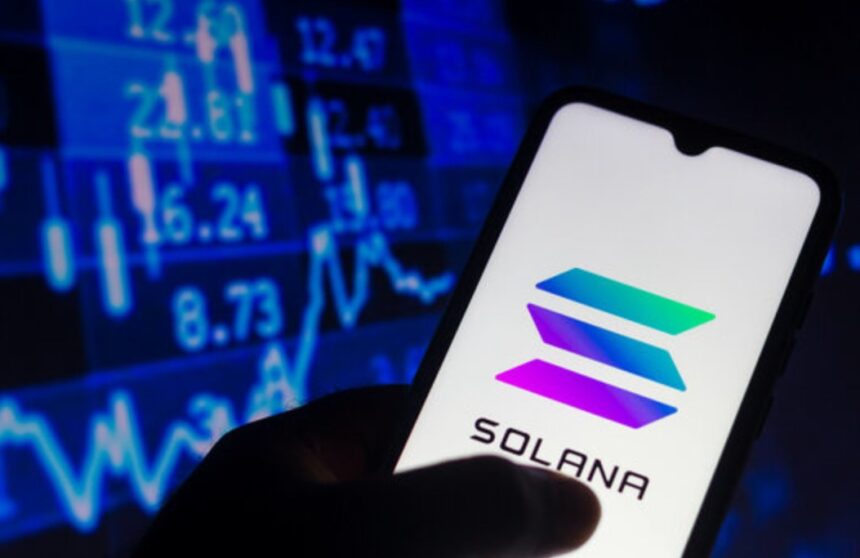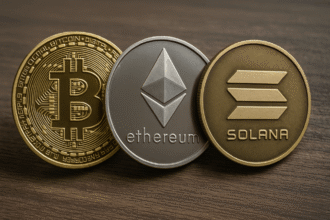The debate over which network will lead the next phase of the crypto ecosystem is not just about speed or capital. It also hints at a vision for the architecture of digital finance. At this point, Solana emerges as a proposal that seeks to redefine the concept of decentralized infrastructure, prioritizing efficiency and scalability as the foundation of a financial system without intermediaries.
The network launched by Anatoly Yakovenko in 2020 could be considered a “ideological successor to Ethereum,” according to investment firm Fidelity Digital Asset’s Coin Report: Solana (SOL). this, We aim to improve both the performance and functionality of smart contracts.
The company claims that “Solana represents a potential portfolio diversification opportunity” for institutional investors, especially those looking at projects with technological underpinnings and global deployment capabilities.
Fidelity explains that its investment in SOL, the network’s native cryptocurrency, is directly tied to the protocol’s activity, as a small portion of each trade is paid with its assets.
Moreover, they remember that most of the value generated in the network flows to SOL stakers. People who receive incentives based on operations and tips By prioritizing transactions. This recalls that improvements to the SIMD-0096 protocol reduced the amount of SOL allocated to writes to almost zero, leaving it as a reward for validators.
The following image shows where Solana’s value flows are most concentrated, highlighting the protocol’s activity as its largest sector.
This document highlights that the Solana community and developers share a core motto: “Increase Bandwidth, Reduce Latency.” This phrase encapsulates the project’s technical goals, which are focused on building a faster base layer with greater capacity to sustain ecosystem expansion without relying on external solutions.
Among the milestones in its development plan through 2025, Fidelity highlights the implementation of Firedancer, a new validator client powered by Jump Crypto. This software works in parallel with the current version, but Increase capacity and improve network resiliency. The report adds that there are also plans to “double block space capacity,” which is currently limited to 48 million computing units, which will allow it to process more transactions per block.
Emmanuel Juarez, an Argentine trader and technical analyst, explained to CriptoNoticias: Fire Dancer “can improve Solana’s speed and recovery.” Additionally, he said, “Solana could create performance advantages over Ethereum and other chains, strengthening its role as a high-capacity network rather than a currency of value.”
Spanish financial analyst Javier Esparza Peribañez thinks similarly, arguing that the arrival of Firedancer “gives Solana more practical advantages for users and developers looking for more immediate performance.”
“Keeping costs low and uptime long will attract DeFi, gaming, and DePIN projects that would not work well on Ethereum without rollups. “Solana can be turned into the main network for high-demand applications without the need for a second L2 layer,” says an expert who interacted with this information portal.
Competition, Performance, Prediction
Fidelity analyzes Solana as a network that “could be seen as an ideological successor to Ethereum” and attempts to improve its technical and user experience. For the company, while both are smart contract platforms, they “work very differently under the hood.” This is because Solana chose a monolithic design that is optimized for speed, low latency, and reduced transaction costs.
Such features enable Solana to provide a more efficient and performant on-chain experience, aiming to improve and extend Ethereum’s capabilities in terms of speed and scalability. Additionally, Solana integrates innovative technologies such as history proofs and parallel execution, allowing you to: Process transactions faster and cheaperhas established itself as a modern and efficient alternative for financial applications and other uses.
Fidelity highlights that Solana has processed $5.6 trillion in the past 12 months, considering only transactions with USDC, USDT, and SOL. The company compares this flow to traditional payment systems: PayPal 1.68 billion, Mastercard 9.8 billion in 2024. The report concludes that “Solana is already a competitive platform for value transfer.”
It likewise highlights the performance of this cryptocurrency in recent years compared to other digital assets. The following graph provided by Fidelity shows how well SOL performs compared to Bitcoin (BTC), Ether (ETH), Ethereum Classic (ETC), and AVAX.
From a financial perspective, Solana’s annual inflation rate is 4.5%, but it decreases by 15% each year, reaching 1.5% after about 7 years. Fidelity said the issue was “a recurring concern within the community.” This could suggest adjustments to future issuance policies.
Juarez, a member of HFM Brokers, emphasizes that falling inflation will “increase the scarcity of SOL, making it more attractive to those looking for a less diluted asset.” “However, prices depend more on actual use and trust in the ecosystem than on emissions rates,” he points out.
Esparza, an author and guru on cryptocurrencies, said SOL’s inflation “reinforces the sustainability and scarcity narrative, logically increasing its appeal as a long-term investment asset.” “Especially in the face of other tokens that maintain fixed or high inflation on the contrary,” he said, adding that “success will also depend on the growth of demand (actual usage of the network) in excess of the outstanding balance maintained.”
Fidelity’s report also highlights asset volatility. 2-year, 4-year, and 5-year returns have been consistent, driven by the post-FTX recovery, while 1-year and 3-year returns remain stable. Fidelity believes this variation “reflects both the experimental nature of the ecosystem and its maturation process.”
Three scenarios for the future of networking
This report presents three possible scenarios. In a bullish scenario, all financial assets move to a global permissionless system like Solana. In this context, traditional exchanges will continue to operate, but some of their operations will often take place in a decentralized environment. Fidelity claims Solana can keep global trade flowing if it can update its infrastructure at the right pace. Integrated as a support network Compatible with traditional assets and new digital devices.
The basic scenario assumes the coexistence of on-chain and legacy systems. From this perspective, Solana “effectively competes among existing blockchains” but does not dominate the market. At the moment, the network performs specific functions such as transferring stablecoins and performing trading operations without becoming a universal platform.
On the other hand, the bearish scenario considers the possibility that Solana remains a niche network. In that case, “some users will find value in its high performance, but it will not be able to establish itself as a reliable infrastructure for high-value transactions,” Fidelity notes.
Overall, the Fidelity Digital Assets paper concludes: Solana’s future depends on maintaining performance Increase stability while increasing recruitment.
“The challenge is to maintain an infrastructure that absorbs global demand without relying on additional layers,” the company said.
Balancing innovation and financial potential
The company concludes its analysis by highlighting that Solana offers a balance between technological innovation and financial potential. “Solana is a potential opportunity to diversify your portfolio,” the report reiterates. While remembering that too The network combines a technical approach with an emphasis on efficiency It has a vision that aims to integrate traditional financial markets into a decentralized environment.
In the company’s words, “Solana’s goal is to improve Ethereum in fundamental ways, and we have made design decisions to achieve this.”
Fidelity interprets this approach as a move to open infrastructure. Ability to maintain trades between digital and traditional assets In the same environment.
In Juarez’s view, three conditions must be met for Solana to become a global value transfer network: “uninterrupted technical stability, low costs, and a favorable regulatory environment.”
In his view, if more stablecoins and global payment gateways are adopted in addition to the above, “Solana could establish itself as a value transfer network rather than a currency itself.”
The expert stressed that “Solana’s weight will depend on the actual usage of the network” and that its sustainability will depend on “transaction demand and the technical stability of the network” rather than the price itself.
Esparza agrees, arguing that “Solana’s value is not maintained solely by token burning; factors such as network deployment and scalability are also determining factors.”






